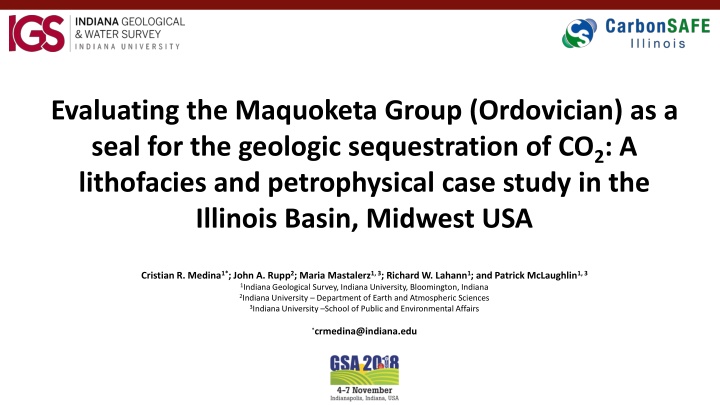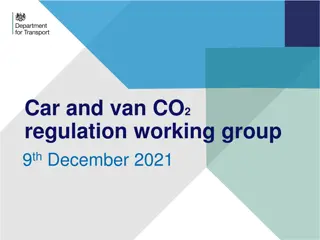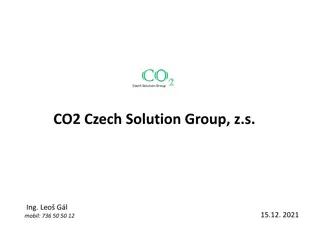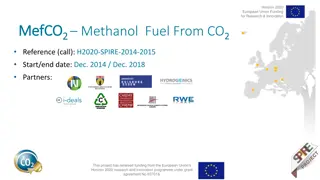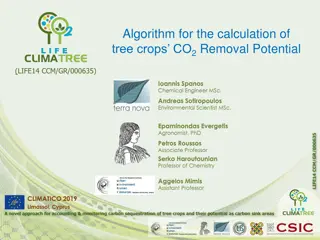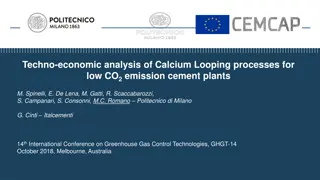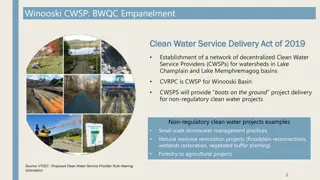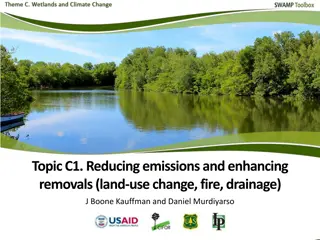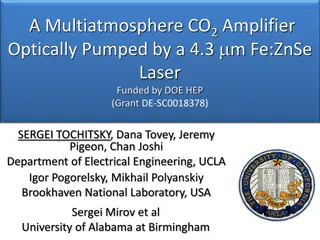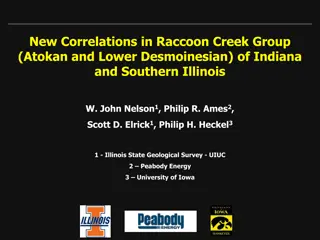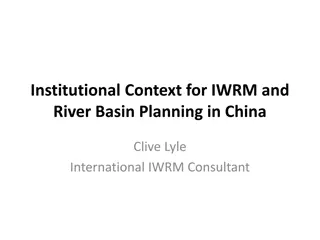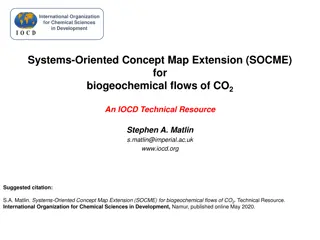Evaluating Maquoketa Group for CO2 Sequestration in Illinois Basin
Study examines the Ordovician Maquoketa Group's potential as a seal for CO2 geologic sequestration in the Illinois Basin. The project background, methodology, results, and conclusions highlight the importance of the CarbonSAFE Initiative in developing storage sites for carbon dioxide from industrial sources. Petrophysical analysis and lithofacies characterization provide insights into the feasibility of utilizing this mixed carbonate-clastic succession for CO2 storage.
Download Presentation

Please find below an Image/Link to download the presentation.
The content on the website is provided AS IS for your information and personal use only. It may not be sold, licensed, or shared on other websites without obtaining consent from the author.If you encounter any issues during the download, it is possible that the publisher has removed the file from their server.
You are allowed to download the files provided on this website for personal or commercial use, subject to the condition that they are used lawfully. All files are the property of their respective owners.
The content on the website is provided AS IS for your information and personal use only. It may not be sold, licensed, or shared on other websites without obtaining consent from the author.
E N D
Presentation Transcript
Evaluating the Maquoketa Group (Ordovician) as a seal for the geologic sequestration of CO2: A lithofacies and petrophysical case study in the Illinois Basin, Midwest USA Cristian R. Medina1*; John A. Rupp2; Maria Mastalerz1, 3; Richard W. Lahann1; and Patrick McLaughlin1, 3 1Indiana Geological Survey, Indiana University, Bloomington, Indiana 2Indiana University Department of Earth and Atmospheric Sciences 3Indiana University School of Public and Environmental Affairs *crmedina@indiana.edu
Presentation Outline Project Background Methodology Results Conclusions
Project Background The Carbon Storage Assurance Facility Enterprise (CarbonSAFE) Initiative projects focus on development of geologic storage sites for the storage of 50+ million metric tons (MMT) of carbon dioxide (CO2) from industrial sources... Source: https://www.netl.doe.gov www.carbonsafe-illinois.org
Upper Ordovician Maquoketa Group A mixed carbonate-clastic succession product of large amounts of fine-grained siliciclastics sediments were shed from the eastern highlands during the Taconic Orogeny. Project Background Methodology Results Conclusions
Study Area Project Background Methodology Results Conclusions
Methodology 1 2 3 4 5 Geophysical logs (GR, NPHI, RHOB) Project Background Methodology Results Conclusions
Project Background Methodology Results Conclusions 1. Limestone: High Ca content (pXRF); low GR; low NPHI; high Ca/Mg ratio. 2. Muddy Limestone: High Si content (pXRF); low GR; medium Ca values. 3. Dolomitic/Calcitic Shale: Medium/high GR; medium-high NPHI; low Ca/Mg ratio. 4-5. Silty Shale or Shale: high GR; high Si content (pXRF). ELAN in ADM Well ELAN Illite (Vol.) Dol. (Vol.) Silty Shale Dol. Shale Dol. Shale
Model Project Background Methodology Results Conclusions 1 2 3 4 5
Output at Each Well: Lithofacies Log 1 2 3 4 5
SWW NEE Project Background Methodology Results Conclusions NEE SWW Source: Gray, 1972
Implications for Sealing Efficiency Assumptions: 1. Hg to CO2 capillary pressure conversion: factor of 12.4: 2. Hydrostatic pressure gradient: 0.49 (psi/ft) (0.011 (MPa/m)) 3. CO2 density: co2(kg/m3) = 712.88 + 0.4427 * P(MPa) 4. CO2 column (h): ? = ?????? ???2? : CO2 column assuming 20% intrusion ?20 20(?) = 9.8 12.4 ?????? ???2
White Co., Illinois Gibson Co., Indiana Pike Co., Indiana Project Background Methodology Results Conclusions ? ? COLOR CODE Lithofacies Bimodal Limestone Muddy Limestone Dolomitic/Calcitic Shale Silty Shale Shale
Well #1: Gibson County, Indiana 5370 5400 COLOR CODE Lithofacies Bimodal Limestone Muddy Limestone Dolomitic/Calcitic Shale Silty Shale Shale Project Background Methodology Results Conclusion
White and Gibson Counties Well #2: Pike County, Indiana 4320
Well #3: White County, Illinois Ca S 0 20000 0 500000 6100 6100 6150 6150 6200 6200 6250 6250 Trenton Ls. ? 6300 6300 6440 6350 6350 6220 6400 6400 Illite XRD 6450 6450
?20 Sealing Efficiency CO2 Column 20(?) = 9.8 12.4 ?????? ???2 White County, Illinois Gibson County, Indiana Pike County, Indiana
Sealing Efficiency CO2 Column 1-10 MPa in CO2-Brine System P20 ranges between 10-100 MPa
Conclusions The lithofacies model created from GR, NPHI and RHOB logs looks consistent when compared with known stratigraphy previous published work However, some discrepancies between lithofacies model and petrofacies characteristics are evident and are due to the associated scales (~1 foot resolution for wireline logs versus centimeter-size samples for MICP, gas adsorption, pXRF, and XRD analyses). Mercury Intrusion Capillary Pressure (MICP) results suggest that, if injecting supercritical CO2 into the underlying units, the Maquoketa Group will serve as an efficient seal when considering buoyancy-driven upward flow.
Acknowledgements This project was funded by the US Department of Energy through the CarbonSAFE-Illinois East Sub-Basin Project.
Thank you! Questions? Cristian R. Medina crmedina@indiana.edu
